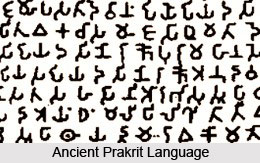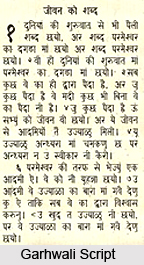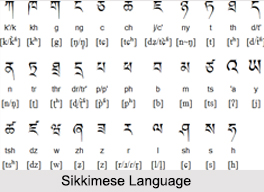Prakrit Grammarians drew their models from Literature and not from spoken languages like the Sanskrit Grammarians. Sanskrit language is the origin of Prakrit Grammar. The tradition that ascribes to Panini a Prakrit grammar is a mere invention to honour Prakrit. Grammar handles Maharashtri in nine chapters and then gives one each to Paisachi, Magadhi, and Sauraseni. Maharashtri is treated as the highest form. These are clearly later than those of Asvaghosha thereby reflecting the works of the third century A.
D. Prdkrtalaksana is a work that came down in the two ascensions. One is older than Vararuchi, the other is younger. Its original view was retention of inter-vocalic consonants. Another testimony attributed to Prakrit is given in the chapter on Prakrit in the Natyashastra.
Vararuchi belonged to the east. He seem to have followed the tradition of Lankesvara or Ravana, who wrote a Prakrtakamadhenu on which is based Rama Tarkavagla`s Prakrtakalpataru. This is the work of the seventeenth century which was again used by Markandeya`s Prakrtasarvasva in that century. Lankesvara is also credited with a comment on Sesaoaga`s Prakrtavyakarana sutra.
The western school is represented by the Valmiki sutras which have lost their original form. Hemchandra`s grammar book deals with Prakrit. He adds Arsa to the list; besides Paisachi he places Sulikapaicachika. He is followed by Trivikrama in his Prakrtagabdanuascma, who uses the Valmiki Sutra terminology.
Valmiki Sutra is recognized in different forms by Trivikrama, Sinharaja, and Laksmidhara. According to some historians Valmiki Sutra is an improved version of the work of Hem Chandra. Markandeya is noteworthy for his treatment of a large number of forms of Prakrit. He had revised the tradition of varieties of dramatic Prakrit. He treats five principal divisions, Maharastri, Sauraseni, Pracya, Avanti with Bahliki and Magadhi with Ardhamagadhi. He also speaks of Sakari, Sandali, Sabari with Abhiri and Audhri, Takki, Nagara and Upanagara. He had based his work on early writers. He wrote in the seventeenth century when Prakrit was a dead language than Sanskrit.
Some historians have depreciated the value of Prakrit Grammarians and some acknowledged their contribution. However on the whole they fail to make a favourable impression. Their rules are too wide and have often generalized. However recent investigations regarding Apabhraricas have proved that they had real grounds for forms which they give.



















